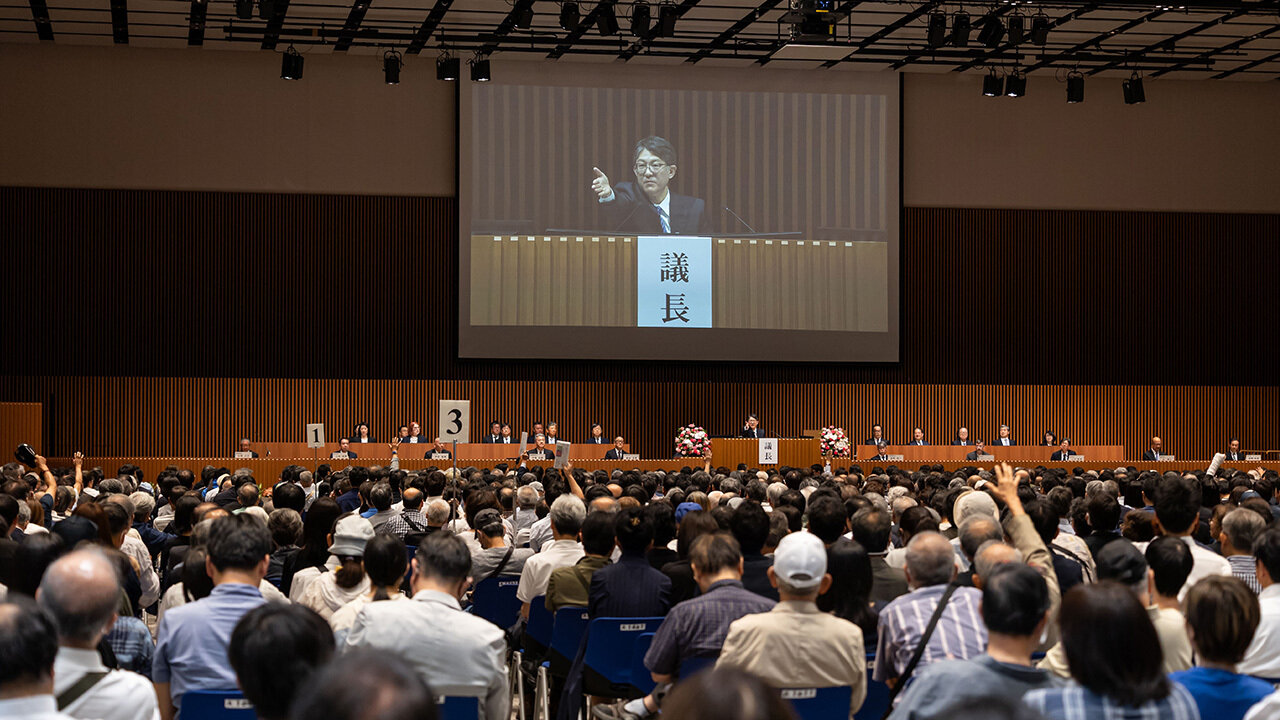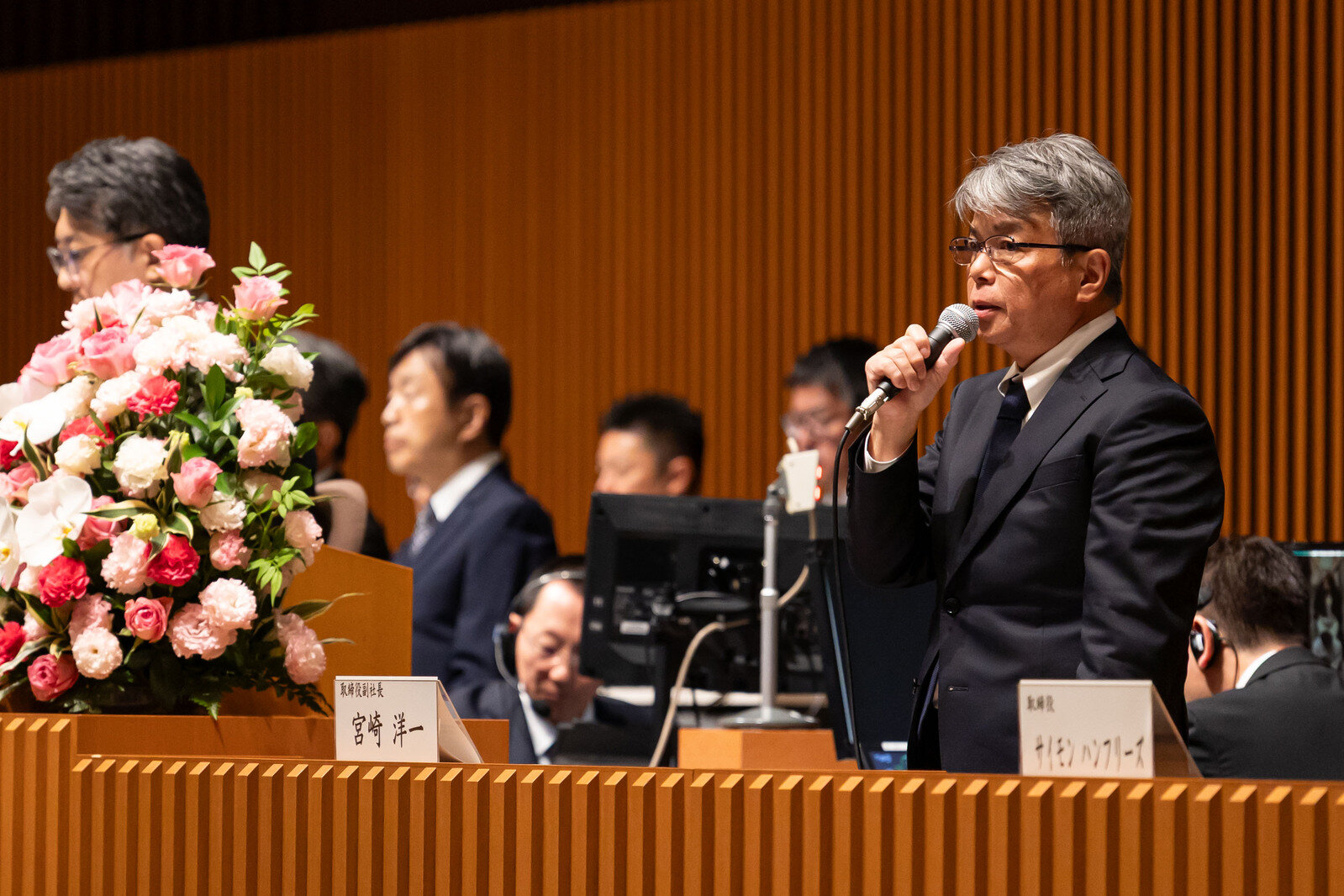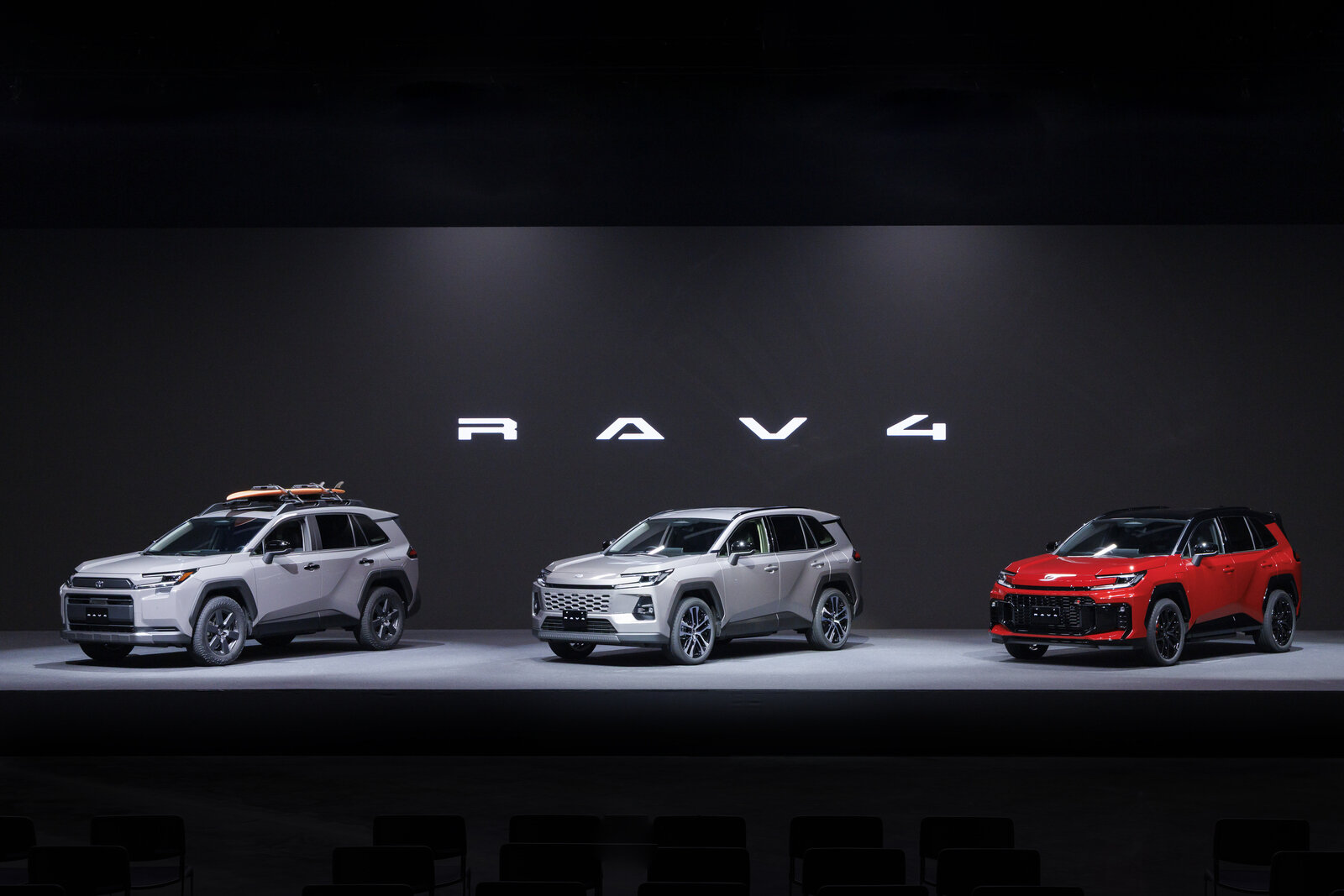
Among the topics raised during the shareholder Q&A session was Toyota's progress in vehicle intelligence and electrification. We share the outlook presented by Vice Presidents Yoichi Miyazaki and Hiroki Nakajima.

In their responses to shareholder questions at this year’s general meeting, Executive Vice Presidents Yoichi Miyazaki and Hiroki Nakajima touched on the topic of intelligence and electrification technologies. Here we look at two such queries.
Strategy and share price
The first was a question about Toyota’s future strategy, including the company’s share price. President Koji Sato turned the microphone over to Vice Presidents Miyazaki and Nakajima, who respectively oversee Toyota’s region- and product-centered initiatives.
In his reply, Vice President Miyazaki cited the financial results announced in May.
For the fiscal year ending March 2025, Toyota posted an operating income of 4.8 trillion yen, an increase of 500 billion yen on the initial forecast of 4.3 trillion. This figure included 700 billion yen of investments in human resources, including suppliers and dealers, as well as growth areas such as battery electric vehicles (BEVs), hydrogen, and software.
As we previously reported on Toyota Times, positive factors included price revisions and the curbing of incentives.
After explaining these results, Vice President Miyazaki offered his analysis: “A major positive factor behind our earnings was the cost reduction and sales-side efforts made possible by the tireless contribution of our suppliers and dealers.” He then continued:
Vice President Miyazaki

At the same time, earnings from the value chain are unquestionably becoming a new pillar of our financial foundations.
In addition to making and delivering new cars, we have also been gradually yet diligently building up value chain earnings by strengthening and deepening our relationship with our existing customers, the owners of 150 million Toyota vehicles globally.
In recent years, these efforts have contributed around 150 billion yen in earnings annually. In this fiscal year, we have been able to raise value chain earnings to the level of 2 trillion yen.
As you will be aware, we are continuing to push our carmaking into new areas, including electrification and intelligence. With Arene, featured in the recently unveiled RAV4, we are expanding the potential of new value chain domains through software-defined vehicles (SDVs*).
*Cars designed and developed with the premise of updating vehicle features via software.
If these efforts show shareholders and investors that Toyota is able to transform itself into a mobility company, we are confident that our share price will rise accordingly.
Developed at Woven by Toyota (WbyT), Arene is a platform for efficiently building safe, secure, and high-quality software. The new RAV4 features the latest version of Toyota Safety Sense, a suite of advanced safety technologies, for which Arene powered development and data collection.
At the RAV4’s world premiere in May, Toyota explained that it was shifting SDV development into full gear, with Chairman Akio Toyoda quoted as saying that “Toyota’s SDVs are first and foremost a path to zero traffic accidents.”

Following up on Vice President Miyazaki’s response to the shareholder’s question, Vice President Nakajima noted how software boosts the value of cars and stressed the importance of collaborating outside the auto industry.
Vice President Nakajima
Value is increased not through vehicles alone, but through various three-way synergies that also include people and infrastructure. We believe such approaches enhance safety further.
To achieve seamless connectivity, we have teamed up with NTT and a rocket company that launches communication satellites.
Meanwhile, artificial intelligence is said to make it possible to predict a driver’s next actions, enabling an even greater level of safety.
At the risk of sounding arrogant, I believe that automobiles can lead the way for various industries, and in doing so, help to make ever-better cars and a better society.

